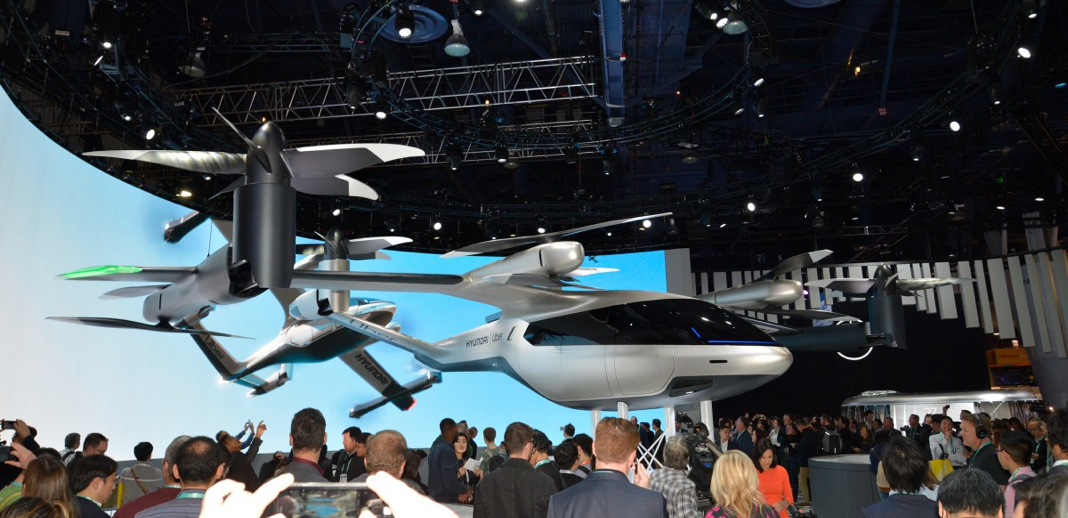Another year at the Consumer Electronics Show has come and gone in a flash! Each January a team from Cubic descends on the Las Vegas strip, fresh from the holiday break and eager to find out what lies ahead for the world of tech. CES is a hub for innovative ideas and gives us a sense of which biggest tech trends to watch out for over the next 12 months. We plan a week of talks, focused meetings with customers, research, and of course networking with others in the industry. This year was no different.
2020 held promises for a 5G revolution and announced more smart devices than one could possibly fathom. Now that we’ve had time to process everything we saw it’s a good time to reflect on our experience at the show.
Observations
It’s difficult to know where to begin. Hyundai’s S-A1 flying taxi, developed in collaboration with Uber, was a memorable experience. It promises to offer an urban air mobility programme via a flying taxi service piloted initially and becoming autonomous over time. It will be 100% electric, fly up to 290km/h, and cruise at an altitude of 300 to 600 mt. Hyundai also made a significant investment in one of our EV partners Arrival a week after the show of $110M. Innovation is becoming prioritized.
Speaking of flying taxis, did you hear we are now connecting flying food deliveries? Cubic has partnered with drone delivery company Manna to enable it to track, monitor and control its drone fleets while delivering from restaurants and centralised kitchens directly to consumers’ homes across Europe and the U.S. We’ll be launching this year so keep your eyes on the skies.
Other mesmerizing demonstrations we witnessed included the new Sony Vision S – a concept car with impressive entertainment features including games and movies, and well-thought out touch-screen user experience. A concept vehicle which caught our eyes was the Bosch IoT Shuttle. This EV incorporates a wide array of applications and infotainment options. It is one example of how electric driverless shuttles could convey passengers in the not too distant future.
Another partner of ours, Panasonic, won the CES 2020 Innovation Award for Cirrus by Panasonic. This showcased connected vehicles communicating with other cars and infrastructure which can help make roads safer and reduce CO2 emissions and congestion, while giving traffic managers real-time actionable data to re-route traffic and dispatch emergency crews.
5G trends for 2020
In recent years there has been a lot of hype about 5G at CES, with many touting 2020 as their deadline for delivery. Did we notice much activity in that space? 5G leaders such as Verizon have already released 5G-enabled devices and Verizon plans to add 20 more to its product portfolio by year-end. 293 operators in 98 countries are already actively investing in 5G and we are proud to say that we are now too 5G ready. With extraordinarily fast data speeds (up to 10 GB/s), millisecond latencies, and massive capacity 5G is a dream come true in terms of powering the connected car.
The future of cars is autonomous, shared and electric. Implementing each of these requires connectivity and 5G will ensure a smoother transition, making connected cars safer and smarter. Autonomous cars will generate on average 4TB* of data per day. Only 5G has the power to support this so the possibilities are endless for companies like Cubic.
Overall it was an eye-opening week and we gained interesting insights heading into 2020.
*McKinsey, 2019.

